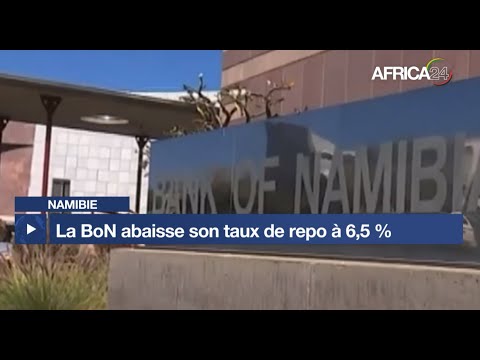The Bank of Namibia has lowered its main interest rate by 25 basis points, setting it at 6.5%, after holding it steady for three consecutive monetary policy meetings. This decision, made on October 18, 2025, aims to support the weakened national economy while ensuring the stability of the Namibian dollar, which is pegged to the South African rand.
The Bank of Namibia has lowered its main interest rate by 25 basis points, bringing it to 6.5%, after keeping it stable for three consecutive meetings. This decision, made on October 18, 2025, aims to support the weakened national economy while ensuring the stability of the Namibian dollar, which is pegged to the South African rand. According to the Bank of Namibia, the goal is to stimulate economic activity without disrupting capital flows or depleting international reserves.
“The Committee, in setting monetary policy, considered the weakness in domestic economic activity, contained inflation, and moderate inflation prospects. It also noted that monetary flows were stable, that real interest rates were relatively high, and that foreign exchange reserves were sufficient to allow for a reduction in the nominal repo rate.”
According to the central bank, the Namibian economy has weakened, with GDP growth slowing to 1.6% in 2025 from 3.3% in 2024, mainly due to declines in the manufacturing, fishing, and agriculture sectors. Inflation averaged 3.6% in the first eight months of 2025, compared to 4.6% in 2024, with recent monthly inflation remaining stable at 3.5%.
“The Committee decided to reduce the repo rate by 25 basis points to 6.5%. Commercial banks are expected to cut their prime lending rates by the same margin to 10.125%. This policy stance will continue to support domestic economic activity while guaranteeing the 1-to-1 link between the Namibian dollar and the South African rand.”
Credit extension to the private sector has shown a gradual recovery, reaching 5.8% in August 2025. Foreign exchange reserves decreased from approximately N$58 billion to N$54.7 billion, covering about 3.6 months of imports and supporting the currency peg.
